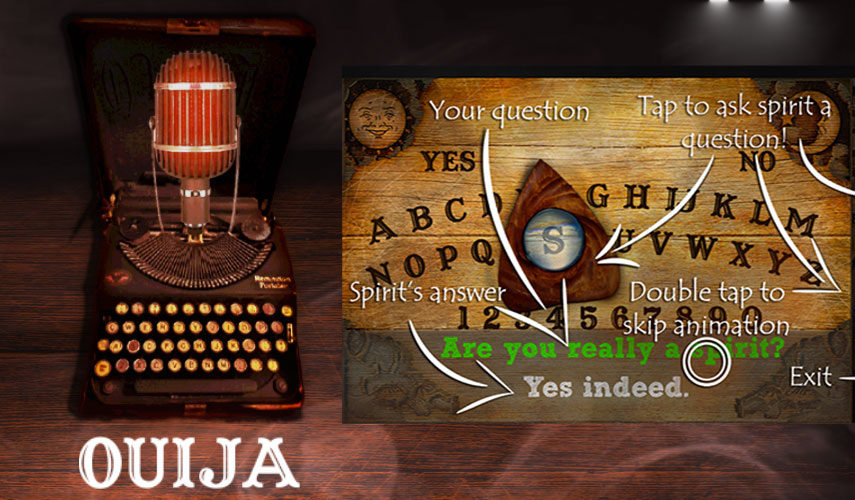Is it just a game, or a portal to something more? The Ouija board, shrouded in mystery and intrigue, continues to captivate and unsettle in equal measure. From hushed teenage sleepovers to serious paranormal investigations, this seemingly simple board has woven itself into the fabric of our cultural consciousness.
For over 130 years, the Ouija board has sparked fascination, amusement, and outright fear. Its mysterious messages, seemingly from beyond the veil, have prompted countless stories, from lighthearted anecdotes to chilling tales of otherworldly contact. While skeptics dismiss it as a parlor trick, believers maintain that it's a genuine tool for communicating with spirits. But beyond the debates about its efficacy as a spiritual conduit, the Ouija board has inadvertently provided psychologists with a window into the workings of the human mind.
| Name: | Ouija Board |
| Alternative Names: | Talking Board, Spirit Board |
| Origin: | 19th Century, United States |
| Purpose: | Allegedly, communication with spirits; commonly used for entertainment or parlor games. |
| Components: | A board marked with letters, numbers, and symbols, and a planchette (movable indicator). |
| Cultural Impact: | Featured in literature, film, and television; often associated with the supernatural and horror genres. |
| Psychological Significance: | Used in studies of ideomotor effect and unconscious movement. |
| Reference: | Smithsonian Magazine: The Strange and Mysterious History of the Ouija Board |
The Ouija's journey began amidst the spiritualism fervor that swept across Europe and the United States in the late 19th century. A time of rapid industrialization and societal change, people sought solace and connection, often turning to spiritualism for answers. When the Ouija board debuted, it was marketed as a harmless parlor game, a fun way to connect with the unseen. Advertisements promised "intelligent communication" with the other side, fueling its popularity and cementing its place in popular culture.
The board's operation is deceptively simple. Participants lightly place their fingers on the planchette, a small heart-shaped or triangular device, and ask a question. The planchette then seemingly moves on its own, spelling out answers across the board. This seemingly autonomous movement is often attributed to spirits, but psychologists suggest a more grounded explanation: the ideomotor effect. This phenomenon explains how subconscious muscle movements can create the illusion of external forces at play. Our own subtle, involuntary movements, imperceptible to us, can guide the planchette, creating the illusion of a message from beyond.
While some dismiss the Ouija board as a product of the ideomotor effect, others maintain their belief in its power. Anecdotes abound of startlingly accurate predictions, messages from deceased loved ones, and chilling encounters with malevolent entities. Whether these stories are genuine connections with the spirit world, products of overactive imaginations, or a combination of both remains a subject of debate. The ambiguity, the uncertainty, is precisely what fuels the enduring fascination with the Ouija board.
The digital age has brought the Ouija experience to a wider audience. Online Ouija boards, coded in languages like Javascript and DHTML, offer a virtual version of the classic talking board. While some find these online versions just as intriguing, others criticize them as lacking the tangible, almost ritualistic quality of the physical board. The clicking of the planchette against the board, the hushed anticipation in the room, the shared experience these are elements lost in the digital translation. Yet, the virtual versions continue to attract those curious about the unknown.
Mike Hall's brainchild, the web Ouija, serves as an example of the board's digital evolution. Created as an experiment in web technologies, it became a popular online destination for those seeking a virtual glimpse into the beyond. Whether these online platforms offer a genuine connection to the spirit world or simply a digital illusion is a question that continues to be debated.
While online Ouija boards may lack the tactile experience of the original, they offer accessibility and a degree of anonymity. Users can explore their curiosity without the social pressures or perceived risks sometimes associated with using a physical board. Furthermore, online platforms can connect individuals across geographical boundaries, creating virtual communities centered around shared interest in the paranormal.
But the Ouija board, whether physical or virtual, carries a cautionary note. The most important rule, according to experienced users, is to never taunt or provoke spirits. Treating the board with respect, setting clear intentions, and ending the session properly are crucial for a safe and positive experience. While many experiences are benign or even entertaining, there are accounts of negative encounters, reinforcing the importance of cautious and respectful engagement.
The Ouija board stands as a testament to humanity's enduring fascination with the unknown. Whether a conduit to the spirit world, a psychological phenomenon, or a blend of both, it continues to spark curiosity, inspire stories, and offer a glimpse, however fleeting, into the realm beyond our understanding. Its story is one of evolving technology, cultural adaptation, and the persistent human desire to connect with something larger than ourselves.


